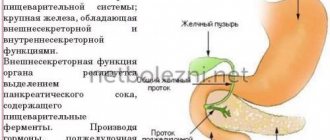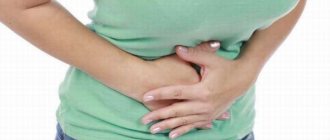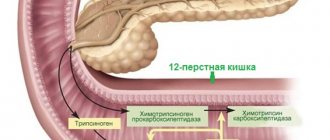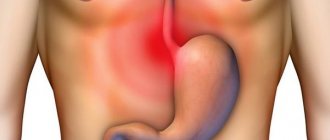Many diseases are accompanied by dyspeptic disorders. Nausea and vomiting are often so severe that they cause dehydration. In such a situation, it is necessary to take specialized medications. The instructions for using Motilium state that this remedy helps to quickly eliminate painful symptoms. The main thing is to remember the specifics of using the drug.
Release forms
The drug is approved for use by people of all ages. In special cases it is used even for newborns. For each patient, you can choose the appropriate form of release of the drug. Motilium is produced in the form of:
- Tablets . They have a biconvex shape and a pleasant creamy color, covered with a thin shell. The section clearly shows a small white core. Labeling is applied to each coated tablet of 10 mg, 30 pcs. "Johnson." By this inscription they can be easily distinguished from counterfeit products.
- Lozenges for resorption . They are small in size and round in shape. Pure white or with a slight cream tint. The medicine in lozenges is packaged in blisters and cardboard boxes.
- Suspensions . Widely used in pediatrics. The product has a uniform consistency and pleasant taste, so kids do not refuse to take it. Children's Motilium suspension is packaged in 100 ml bottles. It comes with a special syringe that allows you to accurately dose the syrup.
The drug belongs to the pharmacological group of antiemetic drugs. The manufacturer of the drug is Janssen-Cilag from Belgium..
Compound
Regardless of the form, domperidone becomes the main working substance of the drug. The tablet contains 10 mg of this component. Additionally, starch, lactose, cellulose, magnesium stearate, and vegetable oil are used.
A drug intended for children must have an attractive taste. For this purpose, sorbitol and sodium saccharinate are added to its composition. It makes the suspension sweet, and therefore children perceive the medicine as a delicacy.
Attention! People prone to severe allergic reactions should carefully study the composition of the medicine before starting use.
Antisecretory agents
These pills reduce the amount of gastric juice because they block histamine receptors. The most common medications from this group are Ranitidine, Gastrocepin, Cimetidine.
This category includes proton pump inhibitors, which reduce acid secretion. Most often from this group, patients are prescribed Omeprazole, Pariet.
Ranitidine
Helps reduce the production of hydrochloric acid, improves blood microcirculation. It can be prescribed for treatment and prevention if a person has a predisposition to the disease. Ranitidine is usually taken twice a day.
Gastrocepin
This is an M1-cholinergic receptor blocker, the action is aimed at suppressing the production of gastric juice, as well as protecting the mucous membrane from an aggressive alkaline environment. Gastrocepin is prescribed for high acidity to reduce the amount of gastric juice secreted. You need to take the tablets 2 times a day.
Cimetidine
This drug reduces acidity levels and makes acid production less intense. You can take the tablets right before meals for 6 weeks.
Omeprazole
A proton pump inhibitor that is used to reduce acid production. The last stage of acid formation is suppressed due to the composition of the tablet. Therefore, the level of secretion decreases regardless of the origin of the stimulus. This drug has a rapid effect that lasts throughout the day. Contraindications for use include pregnancy and lactation.
pharmachologic effect
Motilium tablets and solution are designed to quickly relieve an attack of vomiting. The components of the product enhance gastric motility and intestinal functioning. The active substance does not have the ability to penetrate the blood-brain barrier. In this regard, side effects after its use are rare.
Due to the fact that the medication inhibits the functioning of dopamine receptors, the contraction of the smooth muscles of the stomach slows down. At the same time, its secretory ability is not impaired.
The use of the antiemetic drug for children Motilium is indicated for the treatment of various diseases of the digestive tract. It has a positive effect on the functioning of the intestines. For infants, the drug is prescribed for frequent, profuse regurgitation. At older ages, Motilium is used for constipation in children. It gently relaxes the muscles, which allows for complete bowel movements.
If a person suffers from diarrhea, Motilium helps stop it. It acts on the intestines, accelerating the process of movement of food to the duodenum. Due to this effect, the medication is often prescribed to a child in case of severe intoxication or food poisoning.
Selecting medications by acidity type
When treating gastritis, the level of acidity must be taken into account. At high pH, one tablet is indicated, and at low pH, another.
- Acedin-Pepsin – regulates acid secretion;
- Motilium, Metoclopramide - stimulate gastric motility;
- Mezim, Festal, Pancreatin, Panzinorm - include enzymes that facilitate the process of breaking down food. Mezim and Panzinorm tablets are most often used for chronic gastritis.
In case of increased acidity, medications are prescribed that neutralize the acid:
- Alumag, Rennie - reduce the secretion of gastric juice;
- Methioclopramide – relieves muscle spasms of the digestive tract;
- Atropine, No-shpa - reduce pain;
- Omez, Pariet - reduce the inflammatory process in the mucous membrane.
It is important to remember that incorrect use of tablets and exceeding the dosage often leads to the development of gastritis with low acidity.
Motilium
The medicine stimulates the process of gastric emptying and improves the tone of the core muscles. The drug is an excellent remedy for nausea. Tablets are sold for swallowing and for resorption. Both forms of release are quite effective. The daily dose is no more than 30 mg. The tablets should be taken 30 minutes before meals. They cannot be chewed, only dissolved. Side effects may include hives, rashes, and intestinal spasms.
Mezim
The drug contains only natural ingredients, including pork pancreatin, an enzyme whose properties are very similar to human ones. Take 1-2 tablets three times a day with meals. In some cases, the course of treatment with enzyme preparations is carried out for a long time, and sometimes they are indicated for continuous use.
Panzinorm
This drug promotes the production of enzymes. Panzinorm treats gastritis, gastroduodenitis, cholecystitis and other disorders of the digestive tract. You need to take the medicine for gastritis three times a day, 1 tablet.
Festal
Tablets with pancreatin, which help restore the functions of the stomach and help it break down foods. Drink Festal 1-2 tablets with meals.
Pharmacokinetics and pharmacodynamics
When using the drug Motilium on an empty stomach, the active substance is instantly absorbed. The maximum concentration of domperidone was noted in the blood plasma after 90 minutes. Due to the strong metabolism of the intestines and liver, the bioavailability of the drug rarely exceeds 15%. When taken after food, there is no negative effect on gastric secretion; according to pharmacokinetics, absorption in this case becomes slow.
The ingredients of the medication are not able to accumulate in the cells of the body. Even after 14 days of use, plasma levels of domperidone and drug concentrations detected in the brain remain the same as after the initial dose. Chemical components are excreted mainly by the kidneys, about 10% by the intestines.
The antiemetic effect is achieved through a combination of gastrokinetic action and inhibition of dopamine receptors. This leads to rapid cleansing of the intestines, as well as increased pressure in the sphincter area. Reduced gastric acidity negatively affects the absorption of domperidone.
Tablets for the treatment of pancreatitis of the pancreas
Pancreatitis of the pancreas occurs in acute and chronic forms and always leads to disruption of normal digestion. The most common causes of the disease are alcohol abuse, poor nutrition and the presence of cholelithiasis. Tablets should be taken only as prescribed by your doctor.
List of medications
Not everyone knows which pills are best for inflammation of the pancreas. When pancreatitis is detected, the following medications are most often prescribed:
- enzyme replacement drugs (Panzinorm, Festal, Creon);
- antispasmodics (Drotaverine, Spazmalgon, No-shpa);
- blockers of hydrochloric acid secretion (Omez, Omeprazole, Rabeprazole, Nexium, Famotidine);
- antibiotics;
- antacids (Gastal, Rennie, Rutacid, Vikair);
- analgesics (Aspirin, Baralgin, Analgin);
- NSAIDs (Ketorol, Meloxicam, Nalgesin, Celebrex).
In the presence of pancreatitis, prokinetics are often used. This group includes Cerucal, Motilium, Domperidone, Trimedat. The choice of medication depends on the type of inflammation (acute or chronic). In acute pancreatitis, painkillers from the NSAID group are primarily used. In severe cases, when pain persists, narcotic analgesics can be prescribed.
Application of enzyme agents
Chronic pancreatitis can be treated with enzyme preparations. They are available in tablet form. The medicine Panzinorm 10000 has proven itself well. This remedy compensates for insufficient pancreatic function due to inflammation. The medicine contains various enzymes (lipase, amylase, protease) that promote the digestion of food.
Panzinorm is especially effective for maldigestion (impaired decomposition of nutrients). This drug should be used only outside the period of exacerbation of the disease. Panzinorm is not used for acute pancreatitis. The medicine is contraindicated in children under 3 years of age, with childhood cystic fibrosis, in the acute period of chronic pancreatitis and with intolerance to the drug.
It is not recommended to take Panzinorm during pregnancy. Undesirable effects are most often caused by taking a large dose of the drug. Penzital, Mezim and Creon tablets are often used. Enzyme preparations can normalize the function of the inflamed organ and eliminate pain.
Pain relief pills
Pain is the most common symptom of pancreatitis. The following medications will help eliminate it:
- NSAIDs;
- analgesics;
- antispasmodics.
Antispasmodics are used more often. This group includes No-shpa, Nikoshpan, Drotaverine, Papaverine, Duspatalin, Dicetel. The most effective are myotropic antispasmodics (Sparex, Dicetel, Duspatalin). Dicetel has a selective effect on the organs of the gastrointestinal tract. It disrupts the process of calcium ions entering the cells, which leads to muscle relaxation.
The advantage of this medicine is that it does not affect the functioning of the heart. Dicetel is contraindicated in case of lactase deficiency, galactose intolerance and hypersensitivity of a person to this medicine. Less commonly used are NSAIDs in tablet form.
This is due to their negative effect on the stomach and intestines. Long-term use of NSAIDs can cause gastritis and ulcers. From this group of medications, Diclofenac and Ketorol are used. Simple Aspirin or Analgin will help eliminate pain.
Use of antacids and antisecretory agents
Treatment of pancreatitis often involves the use of antacid tablets.
They are used to protect the duodenal mucosa. Inflammation of the pancreas disrupts the synthesis of bicarbonates, which protect the mucous membrane of the stomach and intestines from acidic contents. Drugs such as Rennie, Gastal, Vikair, Rutacid are prescribed. Vikair is a combination medicine.
It eliminates muscle spasm and neutralizes acid. Along with tablets, antacids are used in the form of gels for oral administration (Phosphalugel, Almagel). When pancreatitis and gastritis are combined with high acidity, H2-histamine receptor blockers and proton pump inhibitors are often prescribed. These include Famotidine, Omeprazole, Pantoprazole, Nexium, Pariet.
For pancreatitis, tablets are prescribed taking into account the patient’s age and the severity of the disease. Sometimes antacids are combined with antibiotics. The latter are prescribed to prevent infectious complications. Broad-spectrum agents are used.
Key indications for starting therapy
The drug has a complex effect on the gastrointestinal tract. Due to this, the following indications for the use of Motilium are distinguished:
- Pain syndrome in the epigastric zone.
- Esophagitis is an inflammatory process localized in the mucous surface of the esophagus.
- Bloating.
- Gastroesophageal reflux.
- Heartburn.
- Violent belching. Newborns are given Motilium to treat excessive regurgitation after breastfeeding.
- Feeling of heaviness in the stomach.
- Difficulties in cleansing the intestines. This symptom is accompanied by various diseases. Motilium for constipation helps to quickly cleanse the gastrointestinal tract and relieve discomfort.
- Exacerbation of peptic ulcer disease.
- Biliary dyskinesia.
- Relief of negative symptoms in Parkinson's disease.
Despite the wide range of indications, it is primarily advisable to use Motilium for vomiting. The drug helps to quickly stop an attack, prevent dehydration, and remove the painful feeling of nausea.
Motilium: instructions for use in children
The drug Motilium is an improved antiemetic drug. Its pharmaceutical group is called “second generation prokinetics”. Compared to the first (representative - Cerucal), influences of a central nature on the brain are maximally excluded.
Forms of release of the drug for children
Pediatricians are allowed to use Motilium only taking into account the weight and age of small patients. Parents are strictly prohibited from trying to use the drug on their own.
In a specific case, the form of choice may be:
- The suspension is a sweetened, jelly-like white liquid, sold in dark 100 ml bottles with an attached measuring syringe dispenser. Prescribed to babies from one month of age with full term and no contraindications.
- Tablets with an outer shell, according to the letter of recommendation from the Ministry of Health, are allowed from 12 years of age with a body weight of at least 35 kg. The package consists of 10 or 30 tablets.
- Instant sublingual tablets with mint flavor - can be used from 5 years, but also when reaching a weight of 35 kg. They dissolve in the mouth within 1-3 seconds.
The preferred children's form is a liquid suspension-syrup. It is more easily absorbed from the intestine, the active substance reaches a therapeutic concentration after 30 minutes, and a maximum one hour after use. Convenient under the age of one year, when the child does not know how to swallow tablets.
Composition and beneficial properties
All varieties of Motilium contain a single active ingredient - domperidone. Additional components participate in the construction of the shell, add flavor to the syrup, and improve the absorption of the drug. After entering the small intestine, domperidone quickly passes into the bloodstream and spreads to all organs. Transformed in the liver, excreted in feces and urine.
The main effect is the blockade of peripheral receptor zones at D2-dopamine receptor sites. As a result, the tone of the muscular layer of the intestines, stomach, and border sphincters is normalized. Therefore, the center does not receive signals about overirritation, and the cause of nausea and vomiting is eliminated.
Physiologists emphasize the propulsive ability of the drug. This means that the contents begin to move in one direction (from the stomach to the intestines); reflux back into the esophagus is not allowed. The action is relevant in eliminating regurgitation in infants, in the treatment of GERD (gastroesophageal reflux disease).
In the small intestine, the formation of a wave of peristalsis is normalized, which is equally important for eliminating both acceleration with diarrhea and prolonged constipation with atony, as well as intestinal colic due to the accumulation of gases in the child’s stomach.
Motilium is an antagonist of the drugs Bromocriptine and Levodopa, which are taken by children with various hyperkinesis. Relieves their negative effects in the form of dyspeptic symptoms.
Indications for treatment of children with Motilium
The target indication for prescribing Motilium is slowing or too rapid movement of contents through the gastrointestinal tract and the resulting dyspeptic disorders. The drug is recommended for children with the following symptoms:
- vomiting or urge;
- increased gas formation with bloating;
- belching in older children and frequent regurgitation in infants;
- colic in babies.
When a child knows how to formulate complaints, he notes:
- burning sensation (heartburn caused by reflux);
- sour taste in the mouth;
- pain around the navel.
Taking Motilium helps relieve functional and organic disorders associated with:
- disruption of the functioning of the digestive system due to disrupted diet and quality of nutrition, introduction of complementary foods, tasting adult food;
- infectious diseases of bacterial and viral etiology with signs of intoxication, damage to the gastrointestinal tract (dysentery, salmonellosis, intestinal influenza, rotavirus infection);
- cyclic vomiting of infants;
- drug and food poisoning;
- motion sickness in vehicles;
- inflammatory diseases of the stomach and intestines;
- irritable bowel syndrome;
- atony after surgery on the abdominal organs.
Contraindications
The use of Motilium is not always completely safe for health. Among the main contraindications are:
- Individual intolerance to domperidone or other components of the drug.
- Pituitary tumor.
- Concomitant use of oral forms of ketoconazole, erythrimycin and other substances that slow down the action of the CYP3A4 isoenzyme, which, according to the data obtained, cause a prolongation of the QT interval. These include Voriconazole, Amiodarone, Telithromycin.
- Tendency to spontaneous bleeding.
- If liver function is seriously impaired, the use of the drug provokes a deterioration in health. At the initial stage of liver failure, it is necessary to conduct additional studies, based on the results of which conclusions can be drawn about the possibility of prescribing Motilium.
- The tableted drug is prohibited for use in children under 5 years of age.
- Body weight less than 35 kilograms.
- Presence of perforation areas in the digestive organs.
During the implementation of clinical trials, no direct negative effects of the drug on the body of a pregnant woman and the fetus were obtained. However, it is prohibited to use it unless absolutely necessary. Pregnancy and breastfeeding can be considered a relative contraindication.
The drug is used with caution in case of impaired renal function. Its use in the presence of problems with the cardiovascular system threatens to increase the risk of developing serious ventricular arrhythmias. It is also undesirable to take the medication if there are electrolyte imbalances in the body. Since the product has contraindications, consult your doctor before starting therapy.
Substitutes for Motilium
Analogues of the drug include the following drugs:
- Brullium Lingvatabs.
- Gastropom.
- Domidon.
- Domperidone.
- Domrid.
- Motorix.
- Peridon.
- Perilium.
All of these medications have the same active ingredient and have a similar effect: they improve gastric motility, suppress nausea and gag reflexes. Indications and contraindications for these drugs are also almost identical.
These drugs also stimulate gastric motility and have antinausea and antiemetic effects. They cost approximately the same. Despite this, before using an analogue of a medicine prescribed by a doctor, you should definitely consult a doctor.
Loading…
- Using the monastery collection to treat pancreatitis
You will be surprised how quickly the disease recedes. Take care of your pancreas! Over 10,000 people have noticed significant improvements in their health simply by drinking a morning drink...
Features of prescribing the antibiotic Ceftriaxone in the treatment of pancreatitis
Its action is to inhibit the vital activity and reproduction of pathogenic bacteria, due to which the activity of the inflammatory process is reduced and the patient’s condition is normalized.
Does Mexidol help with pancreatitis and how do you take the medicine?
Mexidol protects organs from the negative effects of toxins and promotes their rapid elimination. On the fifth day of taking the medicine, nausea, vomiting, burning sensation, pain usually disappear
How to take the medicine Trichopolum when pancreatitis develops
Basically, it is prescribed as part of a complex treatment of acute attacks of the disease or infectious complications of a chronic disease.
The therapeutic effect of Maalox and the scheme of its use for pancreatitis
It enhances the production of mucus, which envelops the walls of the digestive organs and protects them from negative factors. In turn, this promotes rapid healing
A good drug against heartburn and vomiting. I drank it during treatment of acute pancreatitis. Really helped.
I often drink Motilium before going on a visit. I try to eat healthy, but it’s hard to do at family gatherings. I have to take medication.
Many diseases of the digestive tract are accompanied by impaired motility of the stomach and intestines. To eliminate these disorders, a separate group of pharmacological drugs – prokinetics – is used. One of the most effective and proven representatives of this class of drugs in long-term clinical practice is the drug Motilium.
Doses and method of use
The method of use of the medication will be determined by the patient’s age, characteristics of the disease and the formulation. Before starting treatment, you need to ask yourself whether Motilium is taken before or after meals. Its use after food slows down the absorption of domperidone. Therefore, you need to take the medicine before meals.
Use of tablets
For adults and children over the age of 12, the use of the drug in tablet form is permitted. The dosage is selected by the doctor, focusing on body weight, but not more than 80 mg of domperidone every 24 hours. It is better to divide the selected dose into three to four servings.
Anti-nausea tablets are recommended to be taken before meals or before going to bed. At one time you need to take 20 mg of domperidone. Pediatricians give an ambiguous answer to the question of whether pills can be given to children. The instructions for their use do not prohibit this. If the child has reached 5 years of age, then he can be treated with tableted Motilium. In this case, the dose should be halved.
Lozenges for resorption
It is important to remember at what age children are allowed to use lozenges. In pediatrics, they are prescribed only for small patients over 5 years old and only if their weight exceeds 35 kilograms. The dosage is 10 mg three times a day. For children, the maximum permissible daily dosage is 30 mg of domperidone.
For heartburn and vomiting, adults are allowed to use Motilium in lozenges, one piece four times a day. The interval between applications should be at least four hours. The drug must be carefully removed from the foiled packaging. Otherwise, the lozenge will simply fall apart in your hands.
Application of the suspension
Motilium for children is produced in the form of a suspension. It should be given to the baby 15 minutes before the next feeding. For precise dosing of the product, the package contains a special syringe. It is recommended to put the medicine measured with a syringe into a spoon and give it to the little patient.
The instructions for use state that the suspension for children is dosed based on body weight. There should be from 0.25 to 0.5 ml of syrup per kilogram of weight. It is also important to remember how often you can give your child Motilium. Most experts recommend dividing the product into three to four doses per day. It is important that the maximum daily dose is 80 mg for children. Exceeding it increases the risk of developing serious side effects.
Before giving the medicine to your child, it must be shaken thoroughly. You can open the bottle by pressing the cap on top and turning it at the same time. After this, you should fill the syringe from the bottle and empty it, pouring the medicine into a spoon. Give the medicine to your baby. For infants, it is allowed to mix the product with a small amount of water.
The use of Motilium for newborns helps solve most digestive problems. The suspension can be given to older children and even adults, but its effectiveness in this case is lower compared to tablets.
How to treat pancreatitis of the pancreas with medications
Treatment of pancreatitis with medications is effective, but you need to know which ones.
Pancreatitis, or inflammation of the pancreas, directly depends on the quality of food consumed and lifestyle. It is becoming a common illness, as more and more people do not adhere to a healthy diet: there are more temptations to eat tasty, but not healthy; Being too busy at work only allows for unhealthy snacking. Some people prefer to relieve stress from working on weekends with alcohol and fatty foods, and alcohol abuse leads to dysfunction of the digestive tract, including the pancreas.
Causes of pancreatitis and symptoms
What causes the disease? Main reasons:
- frequent infectious diseases of the respiratory tract;
- metabolic disorders due to poor nutrition;
- the presence of diseases of the gastrointestinal tract;
- diabetes;
- low physical activity;
- overweight;
- overeating and the presence in the diet of an abundance of flour products, fried, spicy and salty foods;
- pill poisoning.
Another cause of pancreatitis in adults is a passion for alcoholic beverages, which results in alcohol intoxication. Compliance with diets for weight loss disrupts the normal functioning of the organ.
It is an alarming fact when a person has not one, but several reasons for the development of the disease. Then, without qualified treatment, a complicated form of the disease may occur in the form of tissue necrosis, ascites (accumulation of excess moisture in the abdominal cavity), and jaundice. All this often leads to cancer.
Symptoms and treatment in adults depend on the form of the disease. In adults, symptoms are more pronounced than in children. Inflammation of the pancreas is signaled by:
- pain in the abdominal area on the left side, which sometimes radiates to the back;
- nausea;
- vomit;
- diarrhea;
- increased body temperature;
- bitterness in the mouth.
If you have these signs, you should consult a doctor.
Treatment of pancreatitis with tablets
With this diagnosis, the following drugs are used:
- sedative;
- choleretic;
- hormonal;
- with calcium;
- enveloping agents.
- vitamin complexes that replenish nutritional deficiencies.
What are the best medications to take for the pancreas? Ranitidine or Omeprazole, which reduces gastric secretion, will help the organ at the beginning of treatment. They are usually taken for 14 days, strictly following the dosage prescribed by your doctor.
Contraindications. You can't take pills:
- pregnant women;
- nursing women;
- children under 2 years old;
- patients with liver failure.
Side effects: headache, nausea, skin rash.
For pain, No-Shpa forte in tablets or ampoules for intravenous injection is recommended (if the pain does not go away).
Drugs for the treatment of pancreatitis that reduce the acidity of the environment - antacids (Phosphalugel, Gaviscon).
After attacks, take Pancitrate, Creon, Mezim, Festal or Pancreatin - enzyme preparations that normalize organ function.
Treatment for chronic illness
Chronic pancreatitis indicates inflammation of the bile duct with disruption of the anatomical structure and secretion of enzymes in the pancreas. The disease is accompanied by acute pain, so antibiotics cannot be avoided. Drug treatment of chronic pancreatitis includes taking drugs that have a complex therapeutic effect.
Intramuscular administration of No-Shpa, Platiphylline or Papaverine in combination with analgesics will help eliminate pain. If there is no vomiting, you can take it in tablets.
To inhibit the secretion of digestive enzymes, Contrikal and Gordox are administered intravenously.
When remission occurs, Pentoxyl and Methyluracil are prescribed.
To block the formation of juices in the stomach and duodenum, take Rabeprazole, Ranitidine, Losek, Omez, Pariet. Other drugs are also used to treat chronic pancreatitis: antibacterial, to eliminate intoxication, and relieve swelling. For example, Trasylol, which is administered intravenously, helps against swelling of the gland (not intended for children under 18 years of age). The range of medicines is wide, you just need to choose them correctly after consultation with your doctor.
Symptoms of acute pancreatitis will disappear no earlier than after 5 weeks.
If chronic pancreatitis is diagnosed, then medications need to be taken for a long time, possibly years. Patients will need fermentation therapy throughout their lives. In this case, the tablet treatment regimen must be strictly followed.
As a result of alcohol dependence and long-term drinking, chronic alcoholic pancreatitis can develop. After a single dose of an alcohol-containing drink (or surrogate) in combination with fatty foods, manifestations of acute alcoholic pancreatitis are possible.
Remedies for pancreatitis and cholecystitis
Inflammatory processes in the pancreas are often accompanied by pathological processes in the gallbladder, then we are talking about cholecystitis. Pancreatitis has the same symptoms as cholecystitis. And the same medications are often prescribed.
Treatment of pancreatitis and cholecystitis with medications is possible if you follow the rules of administration and the doctor’s recommendations. The infection can be stopped with the help of the drug Bactrim. Usually it is taken 2 times a day before meals, 1-6 measuring spoons, depending on the severity of the disease. The duration of taking this antibiotic is determined by the doctor, it depends on the patient’s condition and his response to the medicine.
Treatment of cholecystitis and pancreatitis is carried out with the use of a safe antibiotic - Biseptol. If cholecystitis and pancreatitis are chronic, then you need to take the medicine 2 times a day, in more severe cases - 3 times. The dosage is prescribed by a gastroenterologist. This therapy lasts 4 days, then a maintenance course is required for 2 days.
If the illness is accompanied by attacks of nausea, vomiting, pain, then the drug Motilium can be a salvation. But there is a limitation: the medicine is prescribed to children over 5 years old and weighing more than 20 kg. The tablets remove toxins and waste from the body, relieving pain, and help with poisoning. The doctor will determine how long to treat.
Treatment of pancreatitis and cholecystitis with medications also involves taking Eglonil, Holosas, Pancreatin.
If your stomach suddenly hurts
Acute pancreatitis can manifest itself in case of overeating or drinking in large quantities. Therefore, it is not surprising that after a heavy feast, the pancreas gives off acute pain. Other symptoms of pancreatitis may be added: nausea, heaviness in the abdomen, diarrhea. In such cases, they take medications to alleviate the condition: No-Shpu, Papaverine (with Platiphylline), Baralgin.
No matter how good the tablets are, they should not be taken for more than 2 days. They only eliminate pain. Therefore, before treating pancreatitis, you should definitely make an appointment with a doctor and undergo an examination.
- medicines;
- a gentle diet;
- physical therapy classes;
- digestive enzymes that will support the organ under stress;
- will advise giving up alcohol and smoking.
Perhaps the doctor will recommend Allohol and Cholestil to normalize liver function.
If treatment is not started in time, this can lead to destruction of the pancreas and surgical intervention.
When the pain is unbearable, a person seeks salvation in tablets, without which it is impossible to treat pancreatitis and cholecystitis. What medications are best? It depends on the stage of the disease and the individual characteristics of the sick person. You cannot independently determine the method of treatment with medications. Do not abuse medications, otherwise you can seriously harm your health. Only a specialist will select the necessary tablets after a complete examination of the patient.
Drug treatment of pancreatitis should be comprehensive: it is necessary to change your lifestyle. When treating pancreatitis, a gentle diet is of paramount importance. Only under these conditions can you defeat the disease, forget about pain and enjoy life.
Sources used:medicalok.ru
Drug interactions
Motilium can block the action of many medications. It is not recommended to use it simultaneously with the following medications:
- Anticholinergics: Atropine, Scopolamine, Benactizine.
- Antimycotic, for example Pentamidine, Fluconazole, Ketoconazole.
- Antibacterial agents from the macrolide group: Clarithromycin, Erythromycin.
- Drugs that slow down HIV protease: Indavir, Amprenavir.
With the simultaneous use of such drugs, a change in the rhythm of the heart is possible. After stopping the medications, the health condition stabilizes.
Motilium is not prohibited from being taken together with antipsychotics. It does not stimulate or enhance the action and does not provoke side effects.
Diet to eliminate nausea and vomiting
After an attack of acute inflammation of the pancreas has been eliminated, the patient continues to feel nauseous for some time, regardless of fluid or food intake.
To relieve this phenomenon and ensure restoration of the function of the affected organ, a strict diet is prescribed, which involves giving up:
- alcoholic, carbonated drinks;
- fatty, spicy foods;
- smoked, canned products;
- sweets, baked goods;
- legumes;
- mushrooms;
- radishes, radishes, eggplants;
- sorrel, spinach, garlic and some other types of products.
As the necrotic and inflammatory process is eliminated, the organ is gradually restored. Attacks of nausea and pain become less frequent, digestion improves, and body weight gradually returns to normal.
Without following a diet for pancreatitis, it is impossible to improve your health
Failure to follow the diet during this period can lead to a sharp exacerbation of the disease or its transition to a chronic form.
Side effects
If the instructions for use of Motilium are not followed, side effects may occur. Among them, the following stand out:
- Pain in the intestines.
- Problems with bowel movements: diarrhea or constipation.
- Excruciating thirst.
- Headache.
- Drowsiness, fatigue.
- Increased concentration of prolactin in the blood.
- In case of domperidone poisoning, skin rashes may appear, accompanied by severe itching and peeling.
- Side effects from the nervous system very rarely appear in people with weak mental health. They may be worried about being overexcited and nervous.
- Lack of appetite.
- Decreased muscle tone, speech problems.
Anaphylactic reactions, including anaphylactic shock and Quincke's edema, occur very rarely. This condition threatens not only human health, but also human life. It is important to give the victim a potent antihistamine as quickly as possible and transport him to a medical facility. Such reactions, identified during post-registration studies of the drug, occur in one person in a million. But it is impossible to completely exclude the possibility of their occurrence.
Overdose
If you take Motilium excessively, signs of intoxication appear. This problem is most often encountered by infants, for whom it is difficult to choose the correct dosage of the drug. In this case, drowsiness, extrapyramidal disorders, impaired consciousness, and rarely convulsions appear.
In case of overdose, gastric lavage is recommended. Afterwards, be sure to give the victim any sorbent, for example Polysorb or simple activated carbon. You should stop taking Motilium and consult your doctor.
Overdose of the drug does not require specific treatment. It is enough for the victim to spend several days in bed, drink as much fluid as possible, and follow a gentle diet.
special instructions
Before taking Motilium for adults or children, it is important to carefully study the instructions and remember all the features of the product. If some aspects remain unclear, the doctor will help you understand all the intricacies of therapy.
The drug does not affect the speed of psychomotor reactions. Therefore, you may not be careful when driving a vehicle or working in sensitive areas.
Domperidone is metabilized in the liver. Therefore, it can be taken for liver failure only in cases where the use of other means of therapy is impossible. People who also suffer from kidney problems should take this medicine with extreme caution.
Motilium should be given to a child only if the prescribed dosage is strictly followed. Otherwise, negative reactions of the body will appear.
Bismuth preparations
These drugs have an astringent, antiseptic effect, they are good for gastritis and stomach ulcers.
Names of drugs with bismuth:
Vikalin
The medicine contains substances that eliminate pain, neutralize inflammation, and have an enveloping effect on the gastric mucosa. It should be taken 1 hour after eating.
De-nol
The drug has a pronounced enveloping effect. It creates a protective film in the stomach, thanks to which it is possible to protect the lining from the effects of acid.
Storage conditions
When studying the recommendations for use, pay attention to how long the drug can be stored before and after the packaging is damaged. The tableted medication retains its properties for five years. It should be stored in a dry, dark place where the ambient temperature is maintained between 15 and 30 degrees. Children should not have access to the medicine.
Before opening the bottle, the suspension can be stored for three years. After this period, giving the drug to a child is strictly prohibited. After opening the bottle, the medication can be stored at room temperature; the shelf life after opening is not reduced.
Analogs
There are various analogues of the drug Motilium on the modern market. It is difficult to choose the right drug for yourself without consulting a specialist. It is especially important to consult a pediatrician about how to replace Motilium for a child when choosing a product,
Among the main analogues are:
- Damelium . An antiemetic drug available in tablets. Suitable for treating adults and children over 5 years of age.
- Motilak . This product is produced in lozenges for resorption. Positive reviews of the tablets indicate their high effectiveness.
- Motinorm . For adults, tablets are suitable, and in pediatrics, syrup is more often used.
- Cerucal . One of the most powerful antiemetic drugs. It is produced in the form of solutions for intramuscular or intravenous administration, which allows you to quickly achieve results.
Often, discomfort in the stomach leads to attacks of vomiting and nausea. Motilium will quickly help you cope with this problem. The main thing is to remember all the features of its use. If side effects occur after starting therapy, contact your doctor immediately.
How does Motilium® work?
Motilium® helps eliminate the unpleasant symptoms that accompany chronic gastritis with impaired motility. The active ingredient of the drug, domperidone, is an antagonist of peripheral dopamine receptors localized in the wall of the stomach and duodenum. In addition, the drug increases the tone and pressure of the sphincter of the lower esophagus, accelerates gastric emptying, enhances duodenal motility and increases the duration of antral and duodenal contractions. In addition, the gastrokinetic effect of Motilium enhances the antiemetic effect, which is due to the blockade of dopamine receptors located in the chemoreceptor trigger zone at the bottom of the fourth ventricle.











